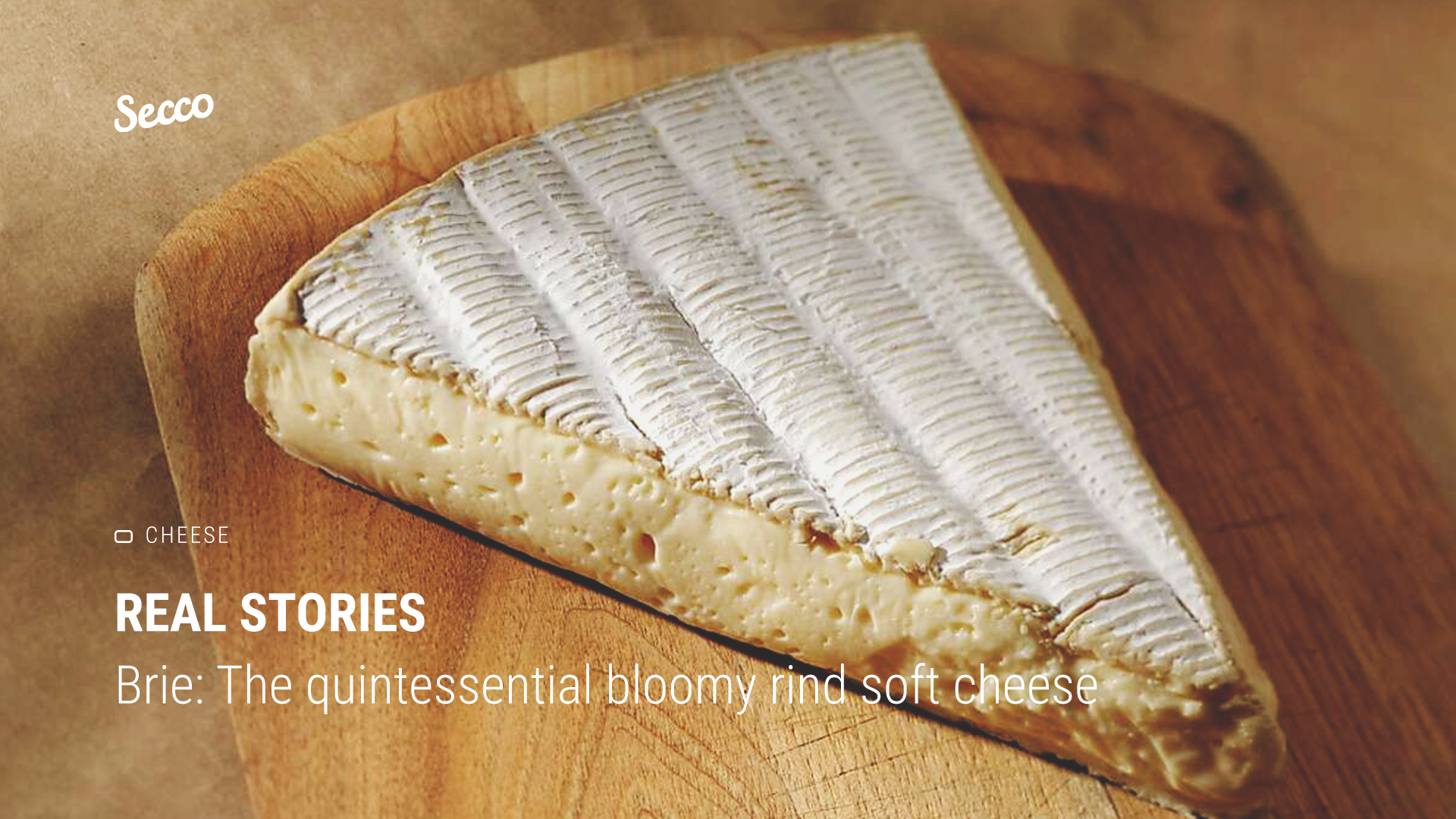World’s oldest Balsamic Vinegar producer Giusti joins Secco as flagship offering
Secco Fine Foods is pleased to announce our partnership with Acetaia Giusti and their range of historical, artisan Balsamic Vinegars of Modena for the South Australian market exclusively.
It is an honour to associate ourselves with the oldest, most historical producer of Balsamic Vinegar in the world and we thank the Giusti family for their belief in Secco’s customer-first values and our stable of aligned brands. We love to surround ourselves with aspirational businesses and to represent such an enduring, successful, yet still artisanal company is hugely significant for Secco.
Having started their operations in 1605 and now run by 17th generation Claudio Giusti and his family, Acetaia Giusti boasts a remarkable legacy of quality. These are not your garden variety vinegars, they are hand made using superior local grapes, long ageing and no sugar, caramel, or artificial additives. Indeed there are many parallels between these vinegars and the world’s finest wines.
Secco will be offering the five important vinegars from Giusti’s ‘Historical Collection’ up to 18 years of barrel age, as well as the traditional Balsamic Vinegar of Modena DOP, the white balsamic condiment and a special truffle balsamic. We also have access to Giusti’s range of infused vinegars and ornamental bottles which we will look to offer seasonally in future.
We are looking forward to a long partnership with Acetaia Giusti, and the opportunity to share these special vinegars with our customers. Should the range be of interest for your venue or store, please contact us to arrange an appointment.
Christian Canala
Founder, Secco Fine Foods
Secco Fine Foods is pleased to announce our partnership with Acetaia Giusti and their range of historical, artisan Balsamic Vinegars of Modena for the South Australian market exclusively.
It is an honour to associate ourselves with the oldest, most historical producer of Balsamic Vinegar in the world and we thank the Giusti family for their belief in Secco’s customer-first values and our stable of aligned brands. We love to surround ourselves with aspirational businesses and to represent such an enduring, successful, yet still artisanal company is hugely significant for Secco.
Tommaso Battaglia, Export Sales Manager (APAC) of Acetaia Giusti visiting Secco HQ with Nick Ridge, Sales and Operations Manager of Secco
Having started their operations in 1605 and now run by 17th generation Claudio Giusti and his family, Acetaia Giusti boasts a remarkable legacy of quality. These are not your garden variety vinegars, they are hand made using superior local grapes, long ageing and no sugar, caramel, or artificial additives. Indeed there are many parallels between these vinegars and the world’s finest wines.
Ancient casks of Balsamic Vinegar of Modena in Acetaia' Giusti’s iconic ageing rooms [Image Courtesy: Acetaia Giusti]
Secco will be offering the five important vinegars from Giusti’s ‘Historical Collection’ up to 20 years of barrel age, as well as the traditional Balsamic Vinegar of Modena DOP, the white balsamic condiment and a special truffle balsamic. We also have access to Giusti’s range of infused vinegars and ornamental bottles which we will look to offer seasonally in future.
“We are thrilled to embark on this exciting journey with Secco, a company that aligns perfectly with our core values of quality, authenticity, and an unwavering commitment to providing exceptional service and customer experiences. We both share a profound belief that behind every outstanding product lies a profound passion, meticulous attention to detail, and a profound respect for our valued customers.” Claudio Stefani Giusti, Owner & CEO, Acetaia Giusti
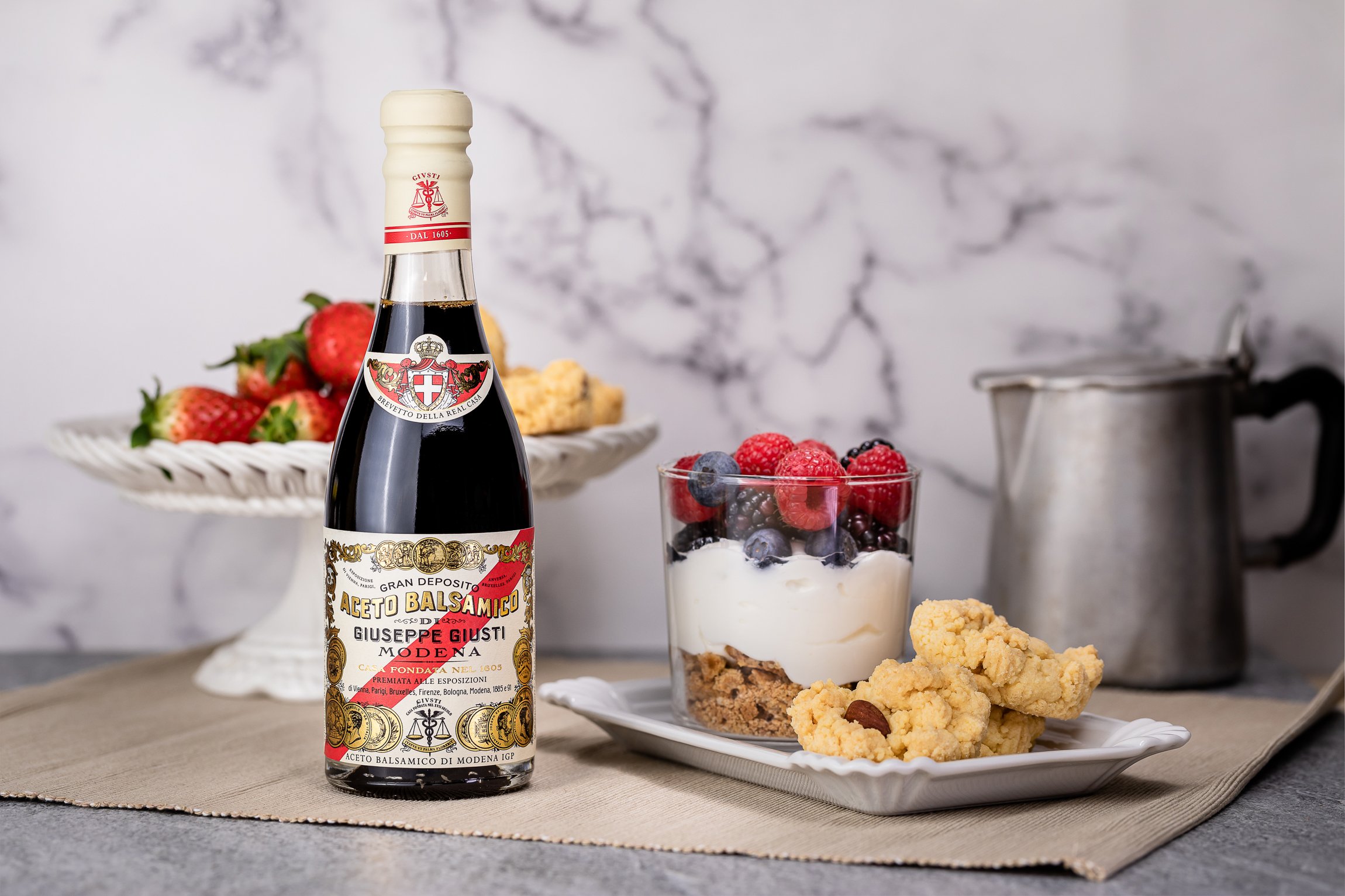
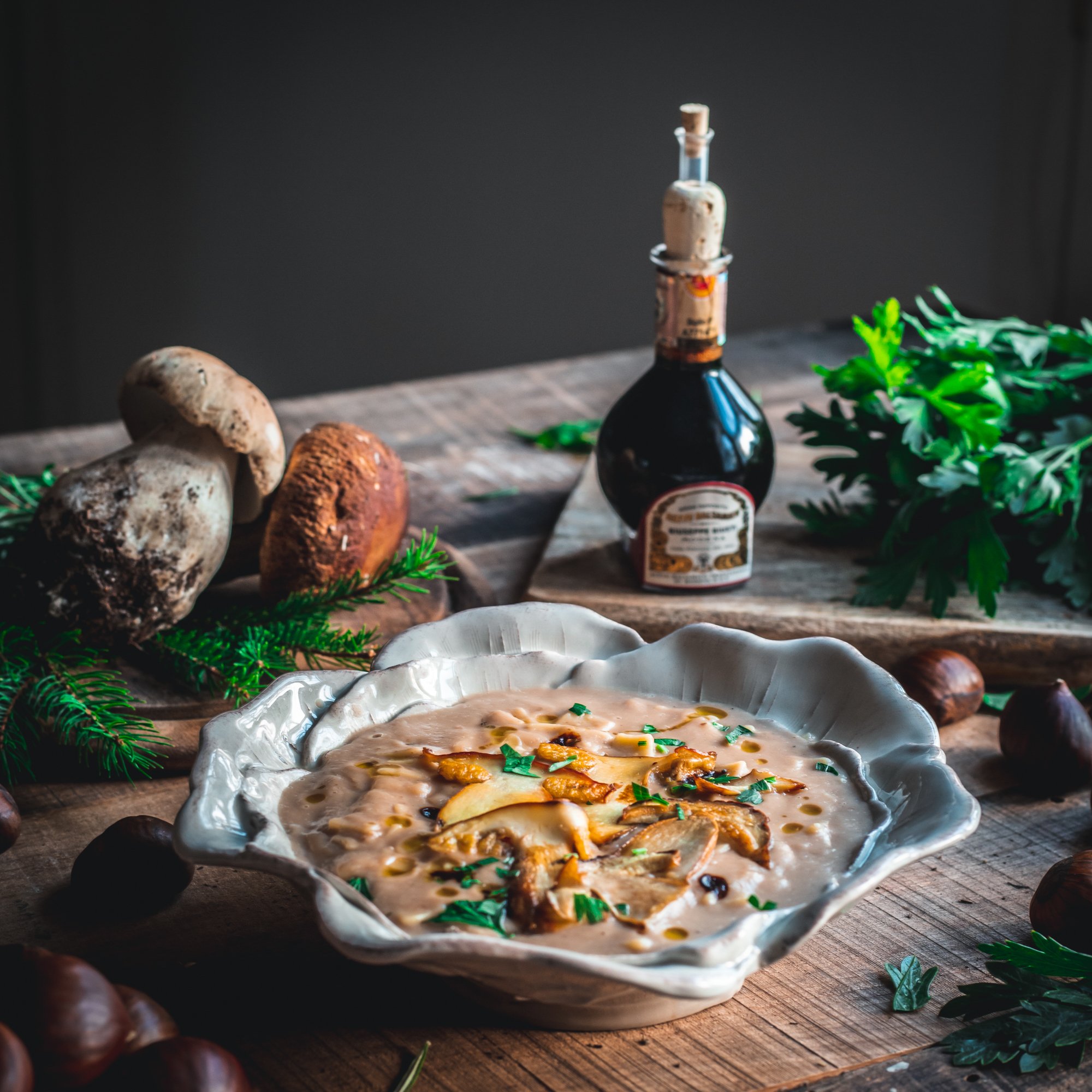
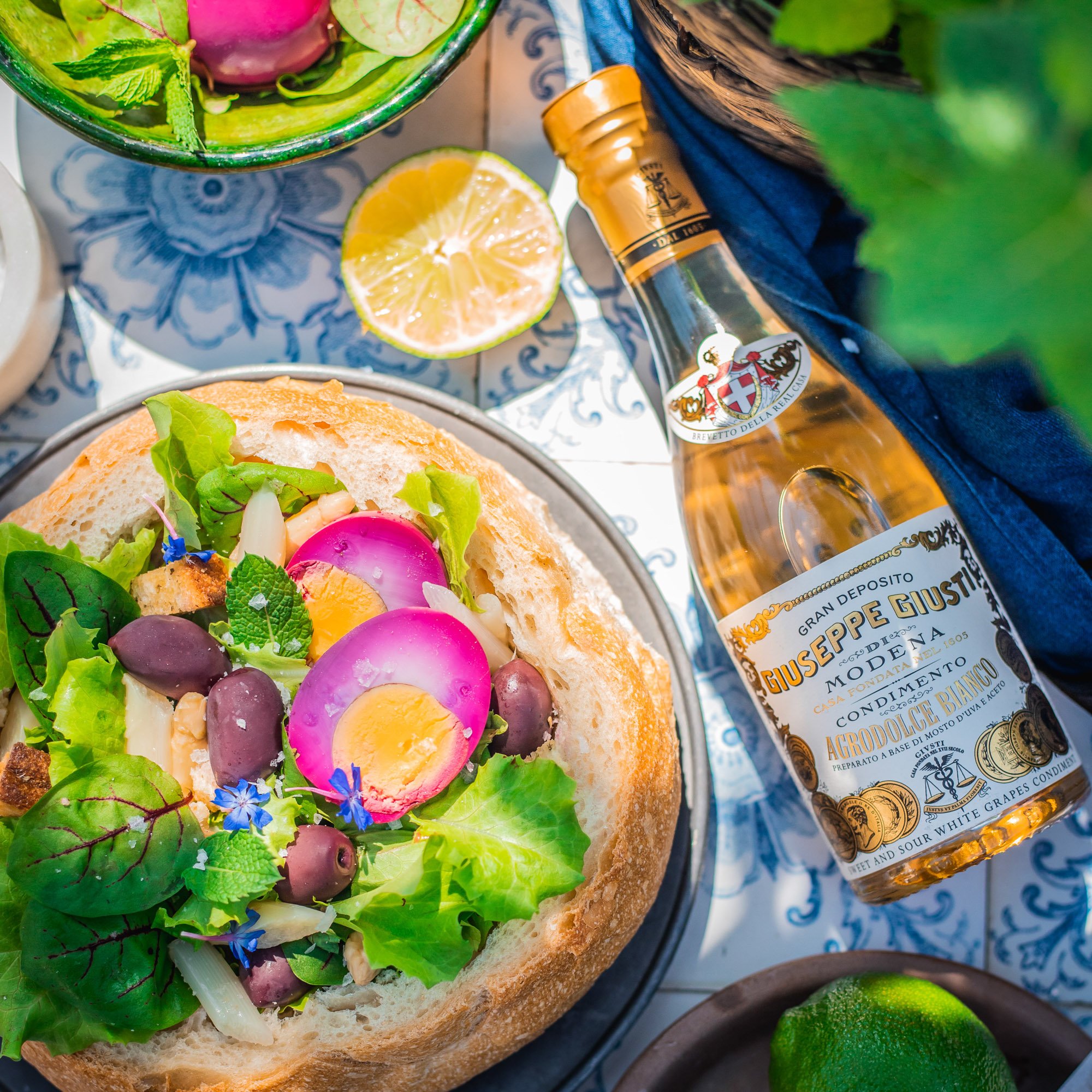
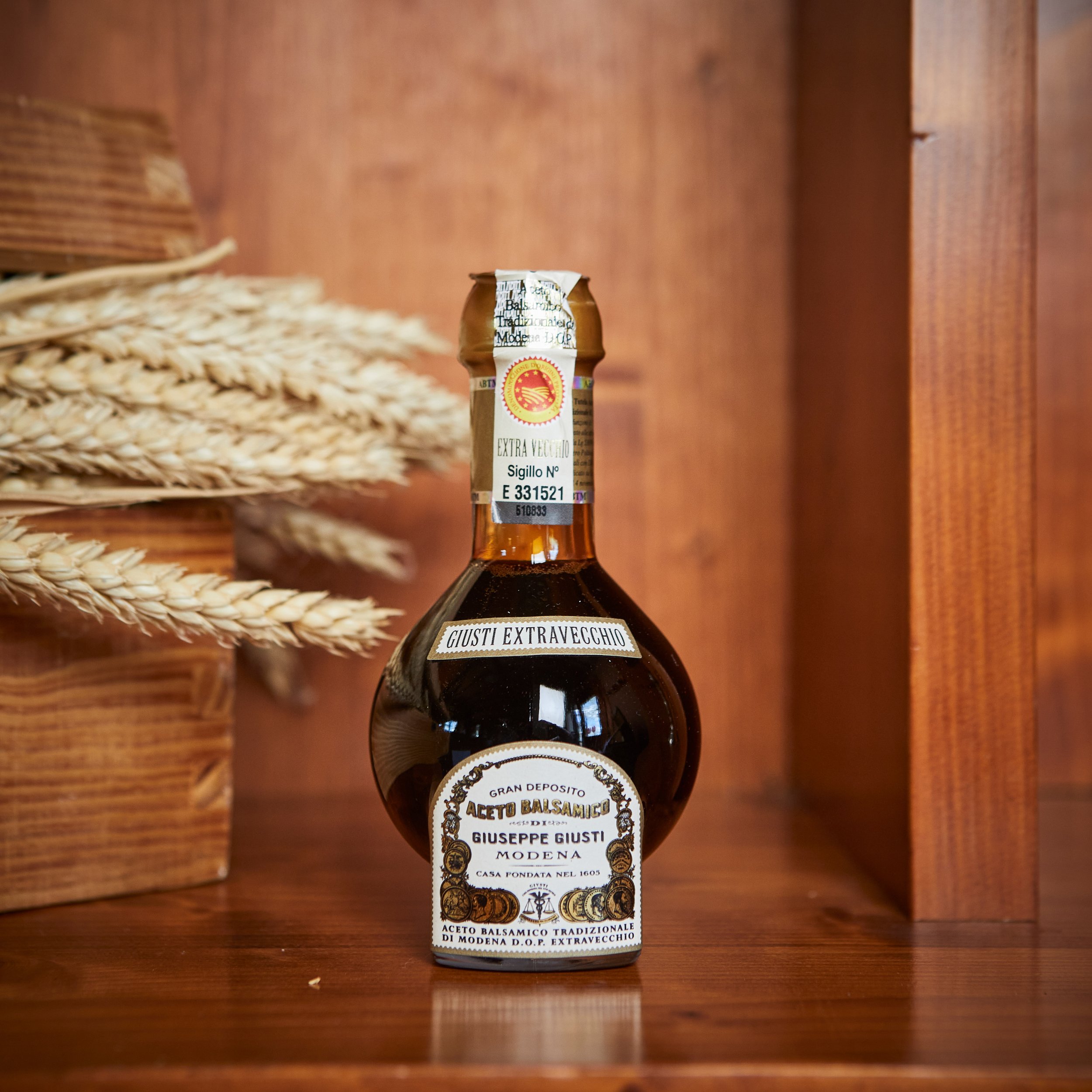
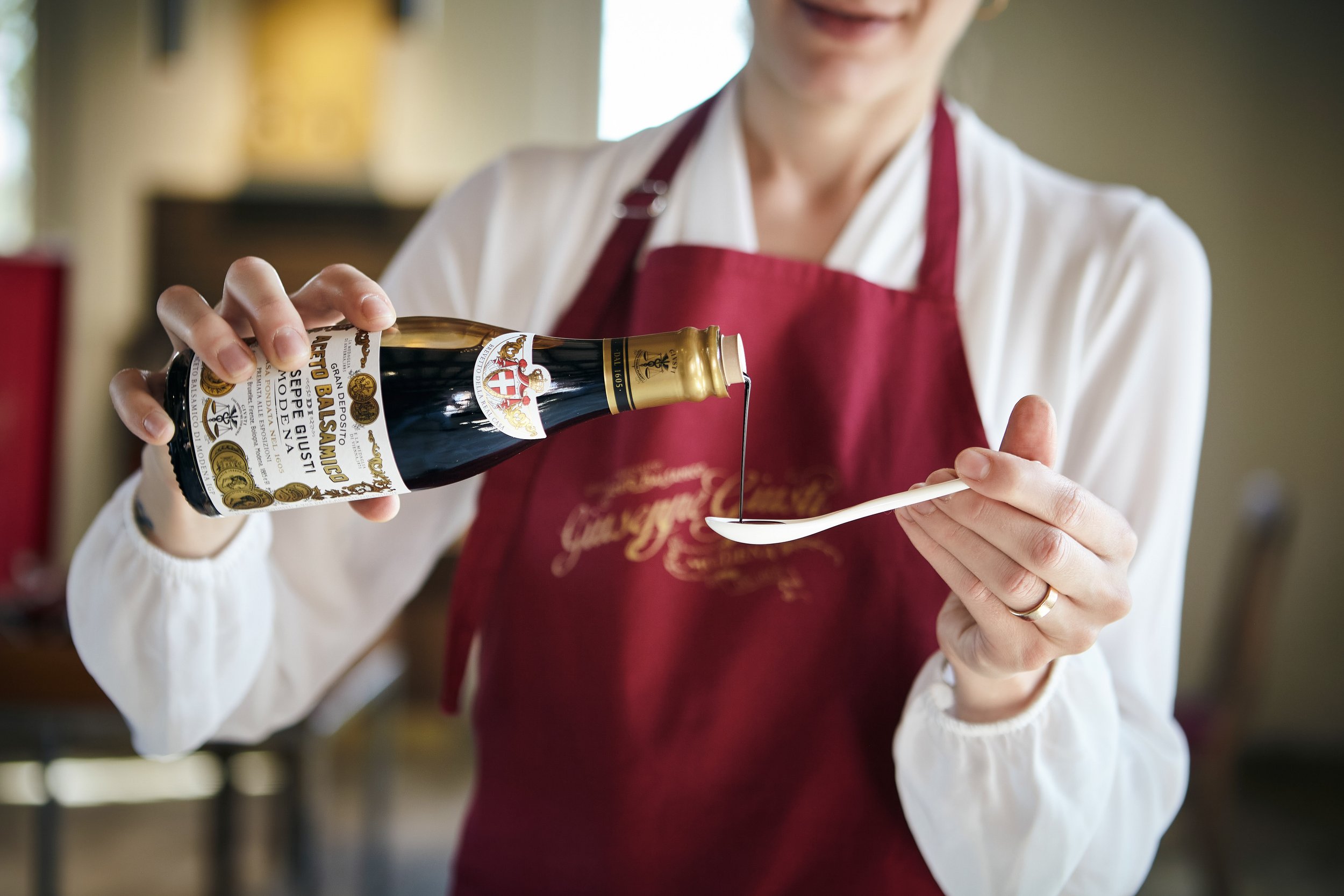
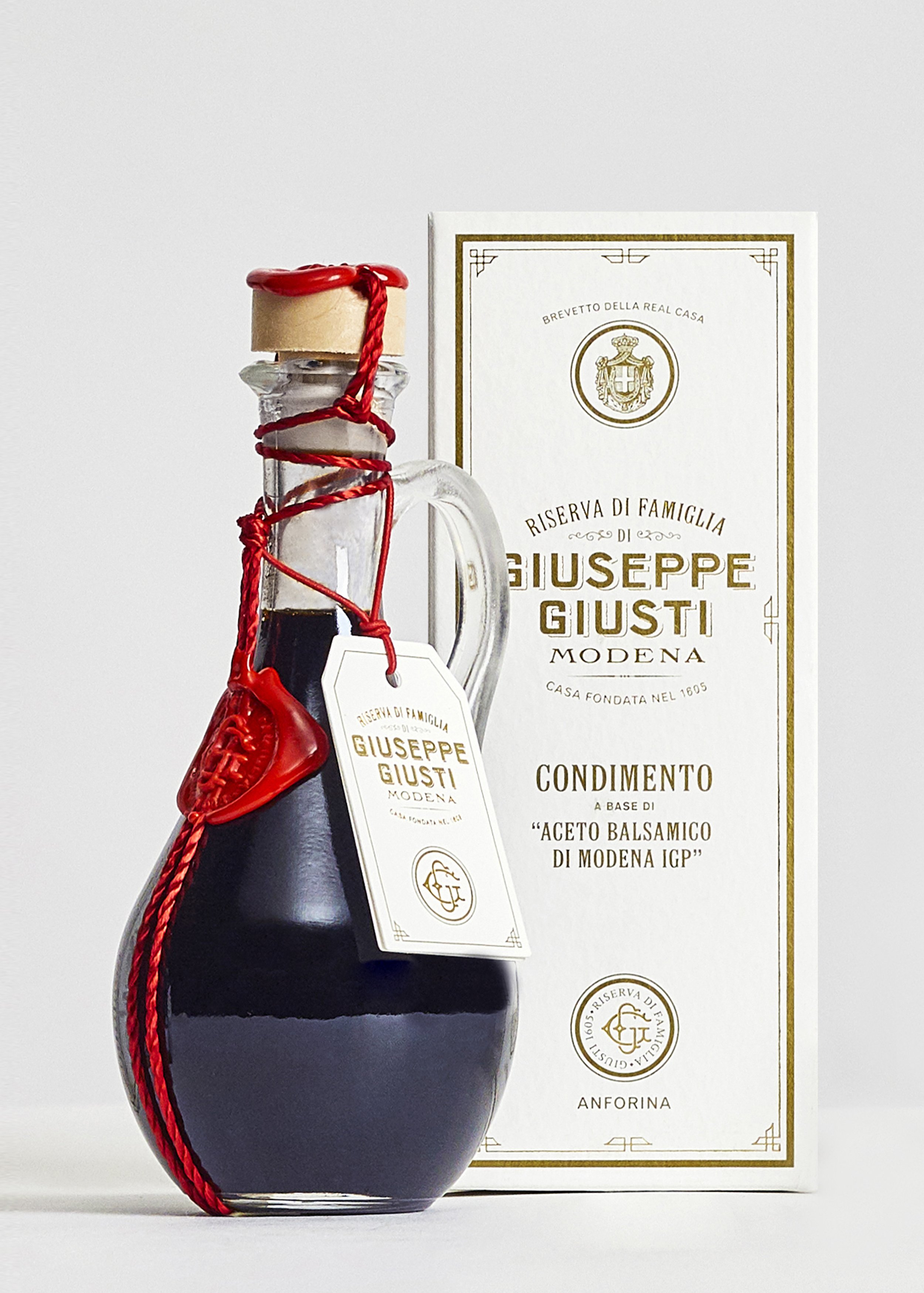
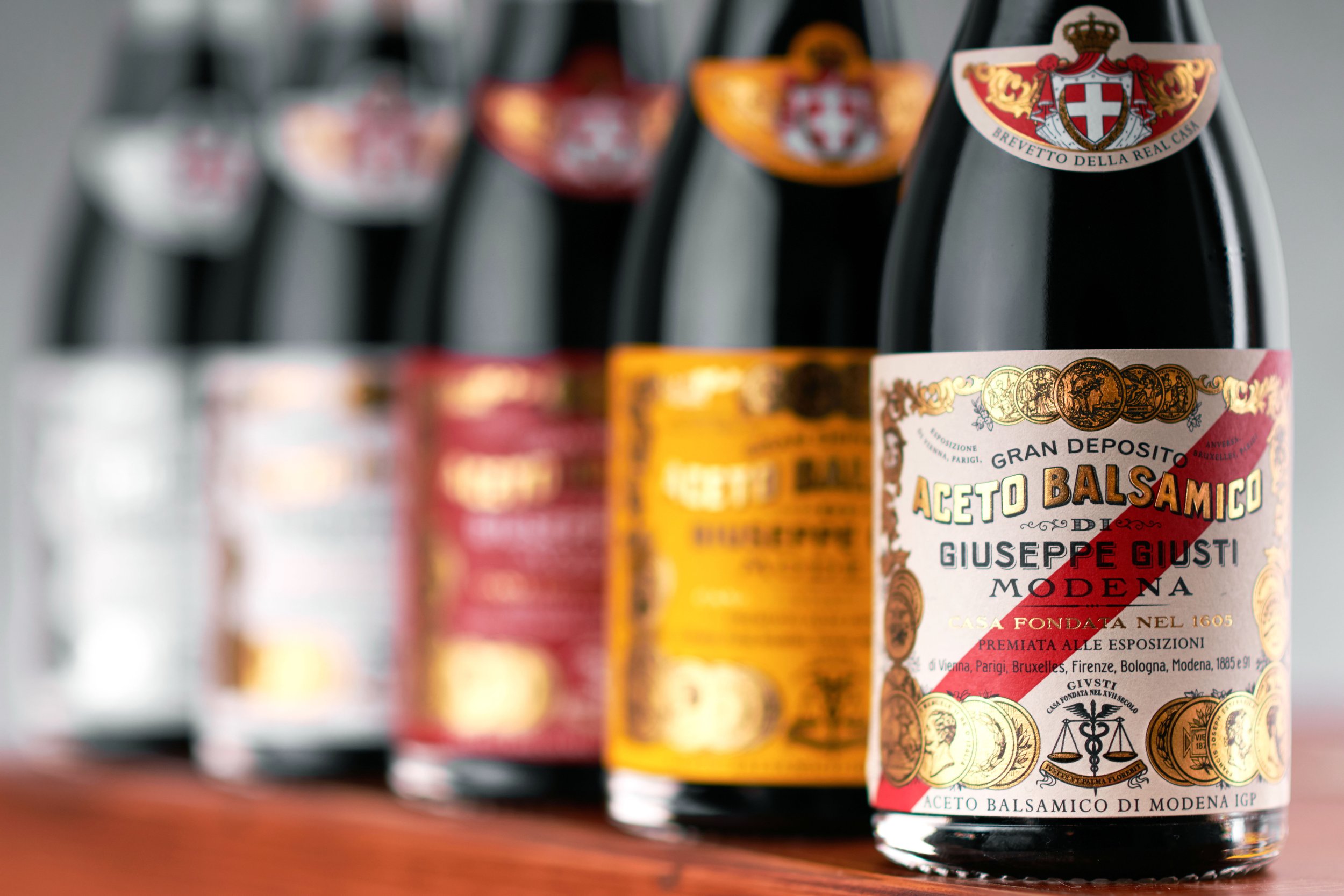
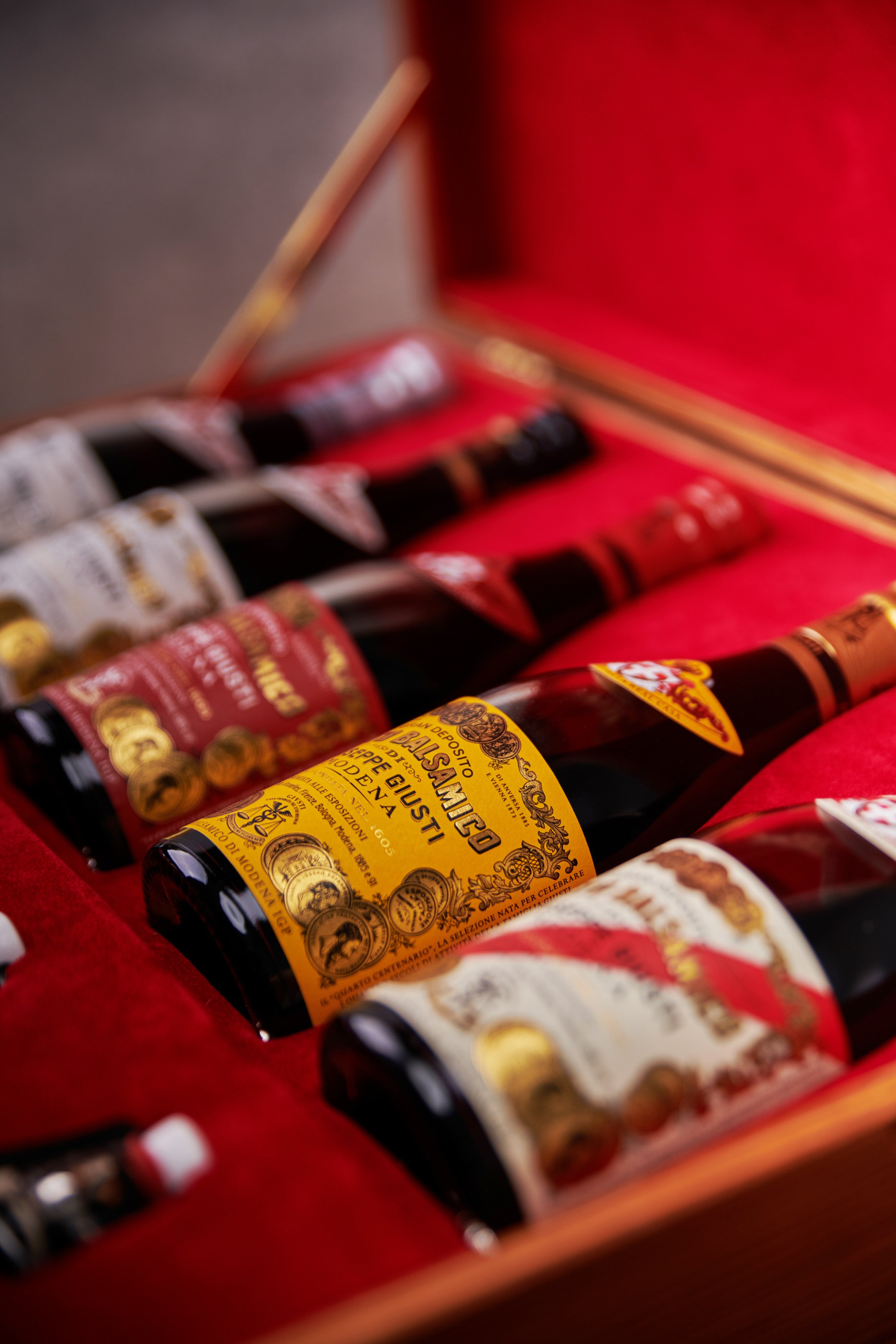

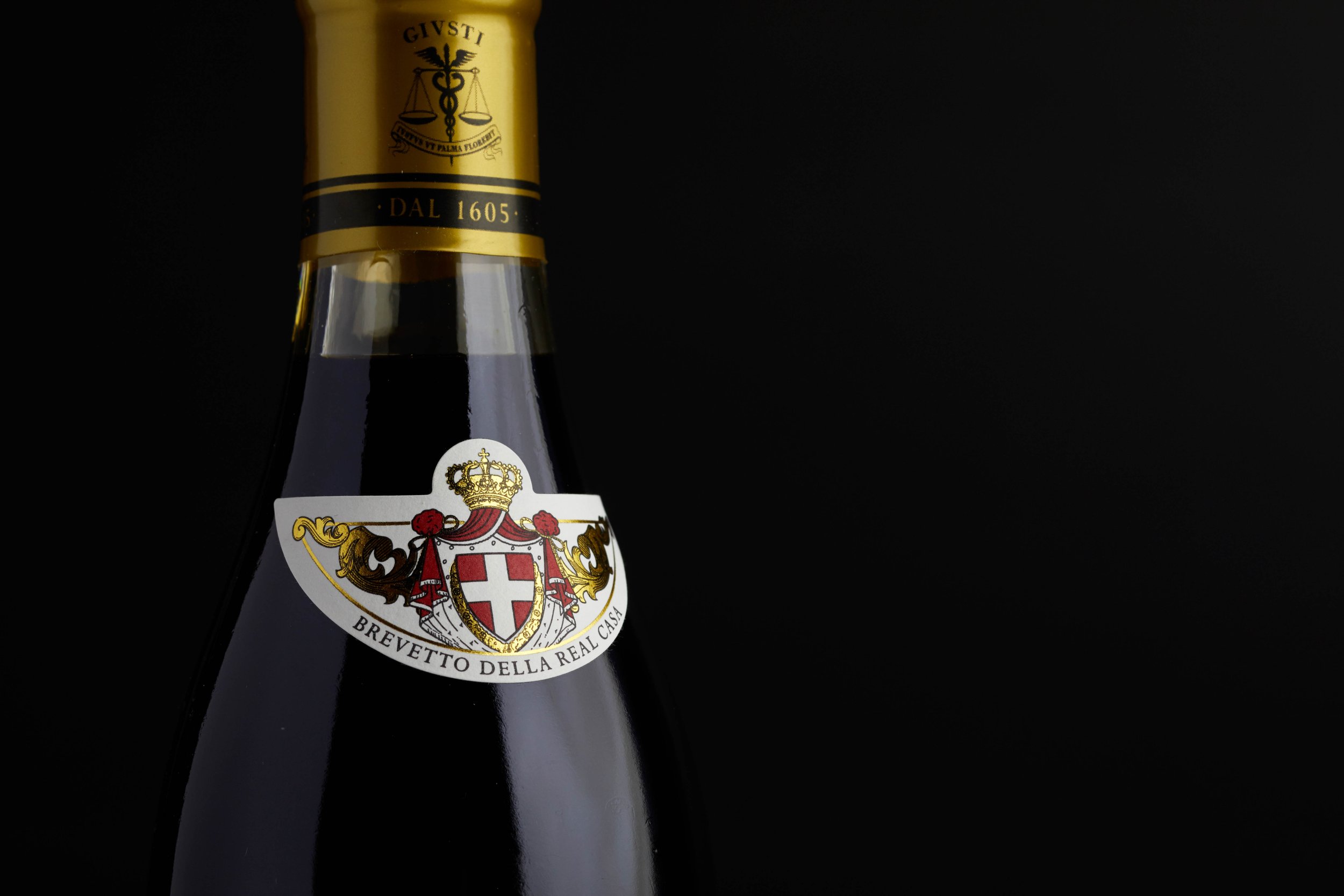
We are looking forward to a long partnership with Acetaia Giusti, and the opportunity to share these special vinegars with our customers. Should the range be of interest for your venue or store, please contact us to arrange an appointment.
Christian Canala
Founder, Secco Fine Foods
Real Stories: Pioneering 100% Australian Extra Virgin Olive Oil
A well-crafted extra virgin olive oil has the ability to capture the essence of the olive's origin, cultivation methods, climate, season, soil quality, variety, region, and ripeness. Similar to the way fine wine is cherished, extra virgin olive oil can be valued and enjoyed.
"We are in a unique position in Australia with our wonderful climate, wonderful environment, with a melting pot of olive varieties, with our technology and with our 'can do' attitude. We can really make some special extra virgin olive oils that will add to its appreciation in a worldwide sense." - Joe Grilli, Primo Estate, McLaren Vale, South Australia
A well-crafted extra virgin olive oil has the ability to capture the essence of the olive's origin, cultivation methods, climate, season, soil quality, variety, region, and ripeness. Similar to the way fine wine is cherished, extra virgin olive oil can be valued and enjoyed.
"We are in a unique position in Australia with our wonderful climate, wonderful environment, with a melting pot of olive varieties, with our technology and with our 'can do' attitude. We can really make some special extra virgin olive oils that will add to its appreciation in a worldwide sense."
- Joe Grilli, Primo Estate, McLaren Vale, South Australia
The origin story of JOSEPH extra virgin olive oil
In 1987, Joe and his wife Dina embarked on their first trip to Italy as a married couple. During their visit to Tuscany, they explored numerous wine producers and noticed an interesting trend: many of these producers packaged their extra virgin olive oil in a similar manner to their wines. Joe and Dina found this concept appealing.
Coincidentally, in the same year, they crafted the Moda Amarone Cabernet Sauvignon Merlot and decided to create a new label, JOSEPH, to showcase it. This sparked an idea to also bottle a small quantity of extra virgin olive oil from local olives to help promote the newly established JOSEPH wine label, which was set for release in 1989.
So, in 1989, they sourced 344-gallon stainless steel drums of extra virgin olive oil through their network of family and friends in Virginia, SA, where Joe had grown up. They manually bottled the first 600 liters of oil and labeled them with the JOSEPH brand.
During a lunch event at Rockpool Restaurant in Sydney in July of that year, where the 1989 Primo Estate Colombard was being unveiled, Joe brought along a sample bottle of JOSEPH extra virgin olive oil. Esteemed individuals like Neil Perry, Simon Johnson, Gay Bilson, John Susman, and Barry McDonald, among others, were present at the event. Joe saw this as an opportunity to gauge their opinion on his new Australian extra virgin olive oil.
At that time, there were no commercially available Australian extra virgin olive oils on the market. While there were some olive oil products infused with herbs, there was no pure, 100% Australian extra virgin olive oil to be found.
Capturing the terroir of South Australia
After the lunch event, the JOSEPH Extra Virgin Olive Oil garnered significant interest from food experts, particularly Simon Johnson, who suggested Joe send him a few cases to distribute among Sydney's food lovers. This marked the beginning of the JOSEPH Extra Virgin Olive Oil journey, which experienced overwhelming demand and nearly sold out. However, sourcing enough olives for increased production proved challenging in the early days.
To address this, Joe embarked on expeditions in search of olives. He would gather olives from the parklands in central Adelaide, where remarkable older groves existed, particularly in North Adelaide and the eastern parklands. He also obtained permission to pick olives from the oldest olive trees in Adelaide located in the Beaumont and Skye area of the Adelaide foothills. These trees were remnants of the Davenport grove, planted in the 1860s, and many of them still thrived. Joe cherished the opportunity to use these olives, often reflecting on how Sir Davenport, who originally planted them for pharmaceutical purposes, would feel knowing they now adorned the tables of food enthusiasts.
Numerous expeditions followed, taking Joe and his team of olive pickers to various regions such as Eden Valley, Willunga, and Keith in the south east of South Australia, to gather olives. The olives were promptly pressed while fresh, and in the early years, with only a few presses available, they would operate around the clock during the season. Bottling JOSEPH Extra Virgin Olive Oils was a laborious process, done one bottle at a time through a tap at the bottom of a stainless steel tank, as bottling facilities were nonexistent for a long time.
A harmony between traditional olive oil making and modern technology
Moving ahead to the late '90s and early 2000s, the modern Australian olive oil industry began to take shape. High-tech continuous presses emerged, enabling olives to be pressed at their peak freshness and producing pristine oil. Additionally, the best Italian olive varieties like Frantoio (Tuscany), Leccino (Tuscany), and Coratina (Puglia) were planted, along with other exceptional varieties from different countries. Modern-style groves and vibration machines were utilised to efficiently harvest olive trees.
"One of our greatest advantages is we do not have the burden of world traditions and cultures to get in the way. We can just use the bits of tradition that work. It is my hope that by telling my story and explaining my opinion from my perspective a quality olive oil producer, I can further the cause of extra virgin olive oil in Australia."
- Joe Grilli, Primo Estate, McLaren Vale, South Australia
Primo Estate and Joe Grilli have played a leading role in these developments, making them the proud producers of possibly Australia's finest extra virgin olive oil. Their ‘First Run’ and ‘Cold Pressed’ extra virgin olive oils have become 'first pours' at some of Australia's finest restaurants. Secco takes pride in being the exclusive distributor of JOSEPH premium extra virgin olive oils and vinegar in the South Australia.
Real Stories: Prosciutto di Parma vs. Prosciutto di San Daniele
Italian prosciutto is renowned for its thin, delicate slices, delightful balance of sweet and salty flavors, and intricate fat marbling. However, it's important to note that not all Italian prosciutti are equal. The term "prosciutto" refers to a dried product, a notion dating back to cooking documents from 200 years BC. These documents recommended a combination of salting and aging as a safe method to dry pork legs. Remarkably, this process has remained unchanged for over five centuries. In crafting these exquisite Italian hams, only three ingredients are permitted: pork leg, salt, and time. Due to the slow drying process, no preservatives are necessary to prevent spoilage. While prosciutto is produced in various regions of Italy, the most renowned ones are Parma and San Daniele.
Italian prosciutto is renowned for its thin, delicate slices, delightful balance of sweet and salty flavors, and intricate fat marbling. However, it's important to note that not all Italian prosciutti are equal. The term "prosciutto" refers to a dried product, a notion dating back to cooking documents from 200 years BC. These documents recommended a combination of salting and aging as a safe method to dry pork legs. Remarkably, this process has remained unchanged for over five centuries. In crafting these exquisite Italian hams, only three ingredients are permitted: pork leg, salt, and time. Due to the slow drying process, no preservatives are necessary to prevent spoilage. While prosciutto is produced in various regions of Italy, the most renowned ones are Parma and San Daniele.
Parma vs San Daniele: Differences and Is One Better Than the Other?
Prosciutto di Parma and Prosciutto di San Daniele are both exceptional Italian hams, making it difficult even for Italians to choose between them. Both hams hold the prestigious DOP (Denominazione d’Origine Protetta – Protected Designation of Origin) classification, ensuring that they are produced, processed, and packaged in specific geographical areas according to traditional methods. Therefore, the origin of both hams is protected by the Italian government.
1. Geographic Location & Climate
Prosciutto di Parma DOP is produced in Parma of the Emilia-Romagna region, while Prosciutto di San Daniele DOP is limited to the town of San Daniele in the Friuli Venezia Giulia region. The climate in these regions plays a role in the distinctive flavours and drying times of the hams.
Parma, located at the foothills of the Tuscan Emilia Apennines, experiences different air conditions compared to San Daniele, which is situated at the foot of the Dolomites, about 350 km away. The drier air in the Dolomites lends San Daniele ham a more aromatic, sweeter, and fattier taste.
Prosciutto di San Daniele DOP hails from the province of Udine in the Friuli Venezia Giulia region of northeastern Italy. Its unique flavour and quality are influenced by the cooling winds, higher elevations of the Dolomite mountains, and the nearby Adriatic Sea and Lake Garda. The microclimate, shaped by the alpine and Adriatic sea air, plays a crucial role in the curing process, resulting in the distinct taste and aroma of Prosciutto di San Daniele.
In Parma, the air from the nearby Versilia sea passes through chestnut groves and pine belts, collecting aromatic scents that contribute to the ham's unique sweet aroma. Proper airflow is essential during the lengthy drying process, ensuring even meat drying and preventing the growth of harmful bacteria. The favourable geographic location of Emilia Romagna allows for refreshing breezes to sweep through the curing rooms. Traditional curing rooms feature tall windows that facilitate the influx of fresh air.
2. Production Methods
The production methods for both Parma and San Daniele prosciutto are protected by the Designation of Origin certification, indicating similar approaches. However, the breed of pigs used, their diet, and the salting process differ, resulting in distinct flavour profiles. San Daniele hams are stacked during aging (Parma hams are hung instead), which compresses the meat slightly, intensifying the flavours and yielding sweeter, saltier, and darker-coloured meat compared to Prosciutto di Parma.
3. Breed & Diet
Prosciutto di Parma DOP strictly adheres to regulations set by the Consorzio del Prosciutto di Parma. Only heritage hogs from the Parma and Langhirano regions are allowed for producing prosciutto. Interestingly, these hogs are fed Parmigiano-Reggiano whey, which enhances the flavour, fat content, and texture of the cured meat. Parmigiano-Reggiano cheese also originates from Emilia Romagna and pairs exceptionally well with prosciutto.
In San Daniele, pigs enjoy a nourishing diet consisting of whey and premium grain as they roam the dry air of the Dolomite foothills. These factors work together to give Prosciutto di San Daniele DOP a distinctively sweet and aromatic character that sets it apart from other prosciutti.
4. Salting Process
The salting process differs between San Daniele and Parma. San Daniele employs a dry salting process, while Parma uses dry salt on the lean part of the pork leg and moist salt on the fat.
5. Taste
San Daniele prosciutto tends to be slightly drier and saltier than Parma due to the legs being pressed for a few days after salting, allowing the salt to penetrate the meat further.
6. Leg Size & Fat Content
San Daniele legs are often smaller and contain more fat compared to Prosciutto di Parma.
7. Price
Due to the fewer producers in San Daniele, it is generally more sought after and, consequently, more expensive. Parma has nearly 200 prosciutto producers, whereas San Daniele has only around 30.
8. Aging
The age of the prosciutto also affects the flavour. Older hams (20 months or more) will be drier and saltier, while younger legs (16 months) will be more moist and balanced. Younger prosciutto can be more challenging to slice. San Daniele ham ages for a minimum of 400 days, while Parma ages for at least 455 days.
9. Visual Differences
The main visual differences lie in the shape of each ham. San Daniele appears compressed during the salting phase, resembling a mandolin. Additionally, the trotter is kept intact to aid in the ham drying process. Parma, on the other hand, has a more natural oval shape and the trotter is removed.
10. Branding
Each ham is branded with a hot iron, bearing distinct identification marks. Parma receives a 5-point crown branding, while San Daniele is marked with the initials SD.
11. Quality of the producer & Final thoughts
The quality of the producer plays a significant role in determining the overall quality of the hams. Both Parma and San Daniele have excellent producers. To find the best fit for your menu or personal preferences, tasting and comparing the two hams is the most reliable way to decide.
Villani Salumi’s historic salumi production (Image Courtesy: Villani Salumi)
Villani Salumi
Renowned as one of the finest producers of Prosciutto di Parma, Villani excels in crafting authentic Italian prosciutto and a variety of exceptional salumi, including the delectable culatta. Situated in the heart of Castelnuovo Rangone, a small town located 40 kilometers south of Modena in the Emilia-Romagna Region, the Villani factory has been a prominent fixture since its establishment in 1886 by Costante and Ernest Villani. They are Emilia-Romagna’s oldest salumi producer and one of the oldest in Italy, currently in their 5th generation.
Over time, Castelnuovo Rangone has gained a reputation as a hub for salumi production in Italy, with a significant portion of the local population employed by Villani in the creation of high-quality prosciutto and other salumi. Additionally, the town is home to the esteemed Villani family Salumi museum, known as Il Museo della Salumeria or MUSA, which has become a notable tourist attraction in the region. This museum celebrates the family's heritage, passion, innovation, and unwavering dedication to producing exceptional salumi.
The Villani family appreciates the longstanding nature of their craft. In their museum, there is a display highlighting one of the ancient Roman streets in Rome, Via Panisperna, which translates to "street of bread and leg ham." Who would have guessed that the Romans had a penchant for a prosciutto panino? In the 1930s, one of Costante and Ernesta's sons returned from a trip to the United States, bringing back new technology he had learned from the American meat industry. Among the innovations were drying hangers used in America's ham industry, which played a vital role in modernising salumi production for the Villani family. This integration of new technology significantly enhanced quality, production efficiency, and packaging for Villani. As a result, Villani proudly exported their first shipment of salumi directly to New York over 80 years ago.
Villani's ability to blend modern technology with time-honoured techniques enables them to overcome traditional challenges. During the aging process of prosciutto, rancidity can impact its quality. However, through meticulous temperature and humidity control, Villani masterfully produces prosciutto and other salumi with a rich, deep, and pure flavor that culminates in a clean and refreshing taste.
We are very proud to offer Vilani’s range of Prosciutto di Parma, Prosciutto di San Daniele and Culatta exclusively in South Australia from our sub-distributorship agreements with importer Savour and Grace.
See Villani’s range of offerings from Secco - https://www.seccofinefoods.com.au/villani
Villani Salumi’s Website - httphttps://www.villanisalumi.it/en
Real Stories: Cantabrian Anchovies, “MSC” & Sustainability
Not all anchovies are the same in terms of taste, texture and quality. On one hand we have hardcore fans of the delicacy, while on the opposite end of the spectrum we have who are best described as mere haters. Whichever camp you may belong to, Anchovies have been with us since the 16th century, profoundly loved the Greeks and the Romans, eventually expanding to the Mediterranean. Anchovies are a staple in South East Asian countries, stemming from their popularity in Ancient China.
The tiny fishes may seem to be in abundance in the vast oceans across the world, but the quest for fine food has led humans to identify that certain species and geographical locations offer the best of the best. Such is the case for the Cantabrian anchovy, Engraulis encrasicolus, which are a true representation of Spanish food culture and an incredible offering from the Basque country.
Not all anchovies are the same in terms of taste, texture and quality. On one hand we have hardcore fans of the delicacy, while on the opposite end of the spectrum we have who are best described as mere haters. Whichever camp you may belong to, Anchovies have been with us since the 16th century, profoundly loved the Greeks and the Romans, eventually expanding to the Mediterranean. Anchovies are a staple in South East Asian countries, stemming from their popularity in Ancient China.
The tiny fishes may seem to be in abundance in the vast oceans across the world, but the quest for fine food has led humans to identify that certain species and geographical locations offer the best of the best. Such is the case for the Cantabrian anchovy, Engraulis encrasicolus, which are a true representation of Spanish food culture and an incredible offering from the Basque country.
The MSC Certification
When the numbers of Cantabrian anchovies was deemed to be alarmingly low, the entire fishing ground of the Cantabrian sea was closed off for 5 years during 2005 to 2010 to let the anchovy population grow. One has to bear in mind that the fishermen and their families largely depended on fishing as their sole means of livelihood. In fact, the women of this region have been historically been involved in both fixing the fishing nets as well as skillfully fileting each anchovy in the canneries, some of which have been in the business for well over a 100 years. To not be able to depend on fishing, was a period of uncertainty for many of their livelihoods. However, it was the combined efforts of the fishermen guilds, canneries and other stakeholders which saw the region work towards the Marine Stewardship Council’s (MSC) assessment for certification. The assessment was conducted by Bureau Veritas, an independent certification body, for compliance with MSC’s three environmental standards: the health of the anchovy population, the impact of the fishery on the marine ecosystem, and efficient fishery management in 2014. A year later in 2015, the first ever European Anchovy (Engraulis encrasicolus) fishery was awarded the prestigious Marine Stewardship Council (MSC) certification for sustainability.
Fishermen pose with the MSC Certified Blue Tick logo at the Bay of Biscay (Image Courtesy: EFEVerde)
How did they do it?
Cantabrian anchovy fishers have been supporting responsible fishing for years, using a selective fishing method like the purse seine.
The purse seine method of fishing (Image courtesy: MSC)
Purse seines are used in the open ocean to target dense schools of single-species fish, like the Cantabrian Anchovy. A vertical net ‘curtain’ is used to surround the school of fish, the bottom of which is then drawn together to enclose the fish, rather like tightening the cords of a drawstring purse. This method of fishing in open water is generally considered to be an efficient form of fishing. It has no contact with the seabed and can have low levels of bycatch (accidental catch of unwanted species). MSC certified fisheries using purse seines must ensure that they leave enough fish in the ocean to reproduce. This can be achieved by using a mesh size large enough to allow smaller fish to swim free.
Read the entire story here.
The Future
By submitting to MSC full assessment, the Bay of Biscay fisherman not just improved the anchovy population, but proved their offering as a world-class fine food in terms of sustainability and traceability. This certification adds value to Cantabrian anchovy products in both national and international markets. Consumers can rest assured that they are buying an anchovy that has been captured according to the internationally-accepted sustainability MSC standards and that they will always be able to trace our product back to its source, the Cantabrian Sea.
Conservas Olasagasti: An iconic Artisan producer of Cantabrian anchovies
The Orlando family has been devoted to the traditional, artisan ways of producing and preserving Olasagasti anchovies and tuna since the 1920s. During the height of the fishing season (late March until early June), they send small fishing boats out into the Cantabrian Sea near San Sebastian. The best fish are prepared by hand using traditional methods and are served in the best tapas bars throughout Spain. All Olasagasti anchovies are MSC (Marine Stewardship Council) certified. In fact, they were at the forefront of supporting the MSC assessment for Cantabrian anchovies as a producer.
“A favourite with chefs, these clean, salt-forward bites are a great all-rounder anchovy to keep in the pantry for entertaining. Olasagasti (in their words, "hard to say but easy to eat") anchovies would go beautifully atop oxheart tomatoes with a crack of pepper or served in a classic Caesar salad.” - ‘Five Best Anchovies to Buy’ by Gourmet Traveller.
We are very proud to offer Olasagasti’s range of Anchovies and Tuna exclusively in South Australia from our sub-distributorship agreements with importer Fino Foods.
See Conservas Olasagasti’s range of offerings from Secco - https://www.seccofinefoods.com.au/conservas-olasagasti
Conservas Olasagasti’s Website - https://www.conservasolasagasti.com/en/
Real Stories: Brie
The quintessential bloomy rind soft cheese and sister to Camembert, Brie originated from its namesake region in France.
One of the most popular categories of specialty cheese, bloomy rind cheeses are covered with a white, downy rind. This is usually a mix of Penicillium candidum, a fluffy white-coloured mold and Geotrichum candidum, a squiggly cream-coloured fungus. As a bloomy rind cheese ages, the cheese’s lactic acid continues to break down curd into a more complex, flavourful and aromatic spreadable and gooey cheese.
Brie is pale in colour with a slight grayish tinge under a rind of white mould. The edible rind packs a lot of flavour, depending on ingredients used and the production methods. Compared to Camembert, it has a slightly higher butterfat content around 60%-75%.
The quintessential bloomy rind soft cheese and sister to Camembert, Brie originated from its namesake region in France.
One of the most popular categories of specialty cheese, bloomy rind cheeses are covered with a white, downy rind. This is usually a mix of Penicillium candidum, a fluffy white-coloured mold and Geotrichum candidum, a squiggly cream-coloured fungus. As a bloomy rind cheese ages, the cheese’s lactic acid continues to break down curd into a more complex, flavourful and aromatic spreadable and gooey cheese.
Brie is pale in colour with a slight grayish tinge under a rind of white mould. The edible rind packs a lot of flavour, depending on ingredients used and the production methods. Compared to Camembert, it has a slightly higher butterfat content around 60%-75%.
The Origins
Cheeses resembling what we know today as Brie have been around since the 8th century. Historians state that Charlemagne enjoyed a brie-style cheese at his coronation banquet in 768 CE. The historic region of Brie roughly corresponds to the modern department of Seine-et-Marnein the Île-de-France region.
The AOP
Though the name Brie is not a controlled or protected entity, two key regional Bries have been granted the European protection standards AOC (appellation d’origine contrôlée) and AOP (appellation d’origine protégée): Brie de Meaux AOP and Brie de Melun AOP. These raw milk plush Bries must be made in a specific geographical area which is the Brie region, located about 60km east and southeast of Paris.
Brie de Meaux AOP
With AOC status granted in 1980, followed by AOP protection received in 1996, the Brie de Meaux is the best known of the two protected version. It is also larger, with each wheel weighing around 2.8kgs and aged for around 6-8 weeks. Manufactured in the town of Meaux in the Brie region of Northern France since the 8th century, it is known as the “Queen of Cheeses”. It is strictly a raw milk cheese which forms a luscious interior with flavours and aromas of mushrooms, melted butter, yeast, and brassica.
Brie de Melun AOP
The other protected Brie from France is the Brie de Melun, weighing around 1.5kgs, smaller than Brie de Meaux. It is an ultra-rich, naturally fermented cheese with a custard-like texture and savoury flavours of sautéed mushrooms. It is produced in the Île-de-France region and made using lactic fermentation. Aged around 4-8 weeks, it has a stronger flavour and more pungent smell. Strictly made from raw milk, it also gained AOC status in 1980 and AOP protection in 1996.
Brie de Melun (Image Credit: Thesupermat)
Other traditional French Bries
Outside the AOP standards, there are a few well-known traditional french bries like Brie de Nangis, Brie de Provins, Brie de Coulommiers, le Fougerus, and Brie de Montereau. The longer aged versions of these cheeses, known as Brie Noir, also exist which have more pungent flavours and a darker colour.
Stabilised Bries? Double Cream? Triple Cream?
Most bries that are available in supermarkets are stablised bries, meaning they use stabilisers to quicken the fermentation process, resulting it a firmer texture that is commercially viable with longer shelf life.
Cheeses in the brie family are not double or triple cream by definition. Although many industrial versions are called double or triple cream “brie”, which simply means the addition of cream in the production process to for a creamier texture. Bloomy rind cheeses in France that actually are double and triple cream cheeses, such as Chaource and Brillat-Savarin, are not classified as Brie.
Raw Milk cheeses and Australia
Australia does not allow imports of raw milk cheeses. An article by Will Studd paints the current picture of this and unfortunately for us, the only way to experience the likes of Brie de Meaux and Brie de Melun is by travelling overseas. Pasteurised bries therefore, are the only options available across the country, but they will not truly 100% replicate the flavour of authentic raw milk brie. However, lactic bries offer a close alternative, which have a similar flavour profile to raw milk bries, yet do not possess the texture, nor the lack of depth of flavour in stabilised bries.
Secco is proud of offer one of these special lactic bries exclusively in South Australia.
Our offering
The L’Original Brie from Paysan Breton takes Brie production back to its traditional roots. It’s most important differentiating factor from Australian bries is that it’s a lactic brie made without any stabilisers. It also uses less rennet which results in a longer time to mature. It's stored in a beautiful wooden box that encourages the cheese to mature into a soft, fudge texture. Traditional raw milk Bries cannot be imported into Australia, so this is the closest thing to one that you can get made with pasteurised milk instead.
It has an earthy, mushroomy flavour with brassica notes and a rich and creamy texture very typical of a French brie. Read more.











